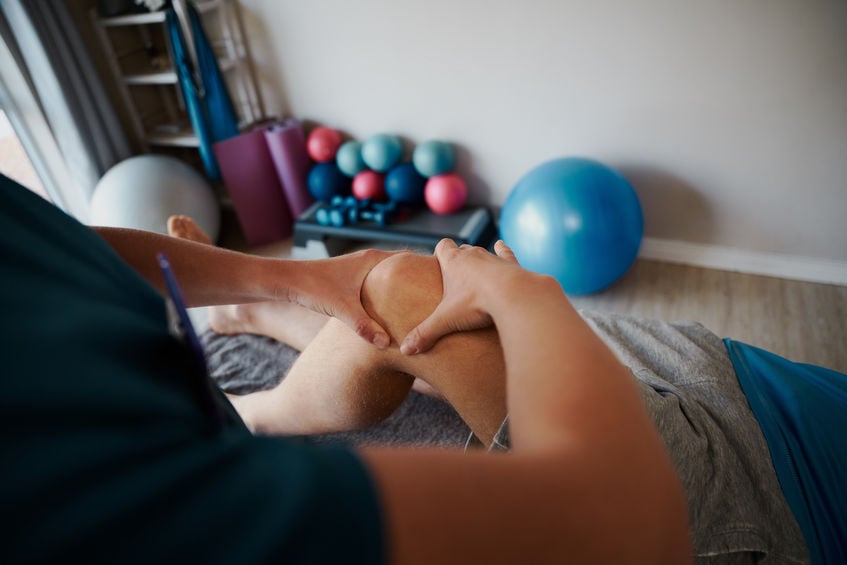Nervous About Knee Surgery?
Total knee arthroscopy is a minimally invasive procedure to diagnose and treat knee problems. Surgeons use this technique for meniscus tears, ligament injuries, and osteoarthritis. This minimally invasive surgery offers many benefits, but the procedure still requires a lengthy recovery. Knee arthroscopy can cause patients to feel worried or frustrated about required downtime. However, steps can be taken to improve mobility, reduce pain, and maximize recovery, allowing patients to return to work or sports faster.

Preparing for total knee arthroscopy
During a minimally invasive total knee arthroscopy, the patient is first put under general anesthesia. Based on previous diagnoses and imaging tests, the surgeon should have a clear idea of the issue. A small incision to fit the scope is made on the front of the knee to access the joint. The device projects the status of the knee on an external monitor. With the diagnosis confirmed, the surgeon will then use another 1-2 incisions to begin the repair. Surgical tools help remove loose cartilage or bone fragments that may be causing pain and inflammation. For a torn ligament, the surgeon may perform reconstruction using a graft. The surgery takes about 1-2 hours, with the patient leaving the same day.
Tips to speed up recovery
Depending on the extent of the operation, downtime after surgery can vary. However, the average time for recovery after a total knee arthroscopy is several weeks or months. Following the doctor's orders is the best way to recover from this surgery. Use ice packs for swelling, and take prescribed medications as instructed. Physical therapy (PT) plays a significant role in recovery. Be sure to attend all sessions and follow the therapist's guidelines, and recovery will speed up significantly. Invest in massage, sauna, and supporting therapies like platelet-rich plasma (PRP) injections. Between treatments, stay active by walking, swimming, and cycling, aiming for low-impact exercises.
1 step forward, 2 steps back
Avoid issues that slow recovery or send patients back into the operating room. By extension, following these rules will speed up the timeline by keeping things on track. Be sure not to overexert the body or place added stress on the knee, which can cause re-injury. Avoiding high-inflammation foods, smoking, and alcohol also helps. More importantly, stay consistent with PT visits and low-impact exercises, as missing treatment can delay recovery.
Ready to get back on your feet?
Total knee arthroscopy is a standard procedure for relieving pain due to cartilage damage, meniscus tears, and other issues. However, a slow and steady recovery is essential after the surgery to ensure the downtime is as short as possible. Follow the doctor's instructions for physical therapy, medication, and diet. Most of all, stay positive and try to remain stress-free.
More Articles from MVSC
April 15, 2024
Spinal surgery is an excellent solution for lower back pain, but symptoms can return. With lifestyle changes, patients can get the most out of fusion.
February 29, 2024
Rotator cuff tears can severely limit shoulder mobility. Surgery can relieve pain and improve mobility, allowing patients better reach.
January 15, 2024
Spinal conditions in the lower back may require a procedure called laminectomy. With MIS, patients have higher success rates.
December 21, 2023
Clavicle fractures are often treated non-surgically. The location and degree of damage can indicate whether collarbone surgery is needed.







